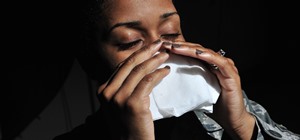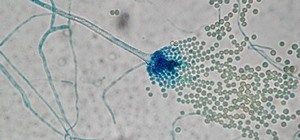The beauty of southern Europe won't protect it from invasions of disease-carrying ticks and mosquitoes—in fact, the Mediterranean climate and landscape may be part of the reason the bloodsuckers are expanding there, bringing unique and terrifying diseases in their wake.
Arthropods, like ticks and mosquitoes, carry viruses that they spread to humans when they feed on them. Emerging arboviruses—the viruses carried by arthropods—belonging to the families Flaviviridae, Bunyaviridae, and Togaviridae, are causing human diseases like West Nile, Crimean-Congo hemorrhagic fever, and chikungunya, respectively.
These viral diseases are already prevalent in many parts of the world, such as Africa, the Middle East, Asia, and Europe—where they cause outbreaks every year. West Nile virus infections occur commonly in the US, too.
Why southern Europe is ripe for some arthropod-borne outbreaks has to do with just the right environment and the different routes the viruses take before they are transmitted to humans. That route can even be different between mosquitoes carrying different viruses.
How Ticks & Mosquitoes Sicken Humans
After hatching from the eggs, ticks must eat blood at every one of their four life stages to survive. And, since they like to have a different host animal's blood at each stage of their life, humans simply get in the way of those feeding cycles and present a good alternate host. The viruses carried by the ticks are injected into hosts through the tick's saliva, where they cause infections.
There are two main ways that mosquito-based viruses get to infecting humans: some go through animals while others are directly transmitted to humans from the mosquitoes themselves.
In the case of West Nile virus, infected mosquitoes bite birds. The birds play a critical role because, each time mosquitoes bite them, the birds are infected with more and more virus. Eventually, the biting mosquitoes carry these viruses to people and other animals—but that's where the cycle stops.
Mosquitoes who bite an infected human or horse, for example, don't get a dose of virus they can pass on.

In the case of dengue, Zika, and chikungunya viruses, the pathogens are transmitted by mosquitoes between humans, without the requirement for infection and viral number amplification in animals.
Whether or not intermediate species are required to be infected before humans is an important factor in transmission of diseases like dengue, Zika, and chikungunya viruses. No requirement for an intermediate host means these agents are ripe for causing disease in urban areas, where the arthropod can directly infect humans—lots of them.
Just the Right Environment
The climate and local ecosystems, along with increasing urbanization, are the main factors influencing virus emergence in southern Europe. The Mediterranean summers are dry with little or no rain, and the winters are mild and wet—favoring winter survival of arthropods.
Billions of birds travel between Eurasia and Africa every year, and the wetlands of the Mediterranean attract the migrating birds to their stopover point, which is coincidentally abundant in Culex mosquitoes, the West Nile virus carriers.
The Biggest Arboviral Threats
A study published in the Journal of Medical Virology online by microbiologist Anna Papa, from Aristotle University of Thessaloniki, Greece, identified arthropod-borne viruses that have expanded their geographic distribution into southern Europe, have caused outbreaks, and represent big threats for future infections.

1. Major Mosquito-Borne Threat
Papa's number one pick for impending tick-borne threats was West Nile virus. It passes through other hosts, like birds, through mosquito bites before the infection reaches humans, where it can cause an asymptomatic or mild disease with fever, malaise, muscle aches, and rash.
West Nile virus is already invading the US, and in 2015, there were cases reported in every state, except South Carolina. Out of 2,175 cases, 146 people died.
In fewer than 1% of people, the virus infects the brain and causes encephalitis, meningitis, and paralysis. In these cases, the fatality rate is 10% and there is no treatment or vaccine for the infection. Large outbreaks of West Nile virus in Greece between 2010–1014 resulted in 441 cases of viral brain infections and the death of 72 people.
Because the virus has already caused so many fatalities, has rapidly spread to several countries in southern Europe, and the mosquito that transmits it, the Culex species, are widespread in the area, Papa identified West Nile virus as one of the biggest arboviral threats to southern Europe.
2. Major Tick-Borne Threat
Crimean-Congo hemorrhagic fever was named as the most likely tick-borne disease threat. The first two human cases in southwestern Europe occurred in 2016, and one of those patients died. The ticks that spread it, Hyalomma species ticks—that have fed previously on animals like cattle, goats, and sheep—are now present in all southern European countries.

Signs of infection with Crimean-Congo hemorrhagic fever are sudden headache, high fever, back pain, joint pain, stomach pain, and vomiting. The beginning signs of bleeding can be seen as bloodshot eyes, a flushed face, a red throat, and red spots on the palate.
At about the fourth day of infection, people infected with Crimean-Congo hemorrhagic fever have large areas of severe bruising, severe nosebleeds, and other uncontrolled bleeding. As many as 50% of hospitalized patients die.
Patients are usually treated with the antiviral medication ribavirin, but its effectiveness against this hemorrhagic fever isn't known.
Increasing urbanization means that arthropod-borne viruses, like dengue, Zika, and chikungunya—all mosquito-borne viruses—can get a stronghold without needing other mammals as intermediate hosts. That fact, combined with no effective prevention or treatment, caused Papa to cite these diseases as potential newcomers to watch in the southern European arboviral repertoire.
Prevention Is Key
In the case of arboviral diseases, maybe forewarned will be forearmed and diligent surveillance will payoff with rapid identification and mitigation of emerging infections.
In the meantime, be sure to pack your insect repellent containing DEET (N,N-Diethyl-meta-toluamide) for your trip to southern Europe. It's the most effective way to prevent bites from arthropods and the devastating diseases they can cause.
Just updated your iPhone? You'll find new emoji, enhanced security, podcast transcripts, Apple Cash virtual numbers, and other useful features. There are even new additions hidden within Safari. Find out what's new and changed on your iPhone with the iOS 17.4 update.


























Be the First to Comment
Share Your Thoughts